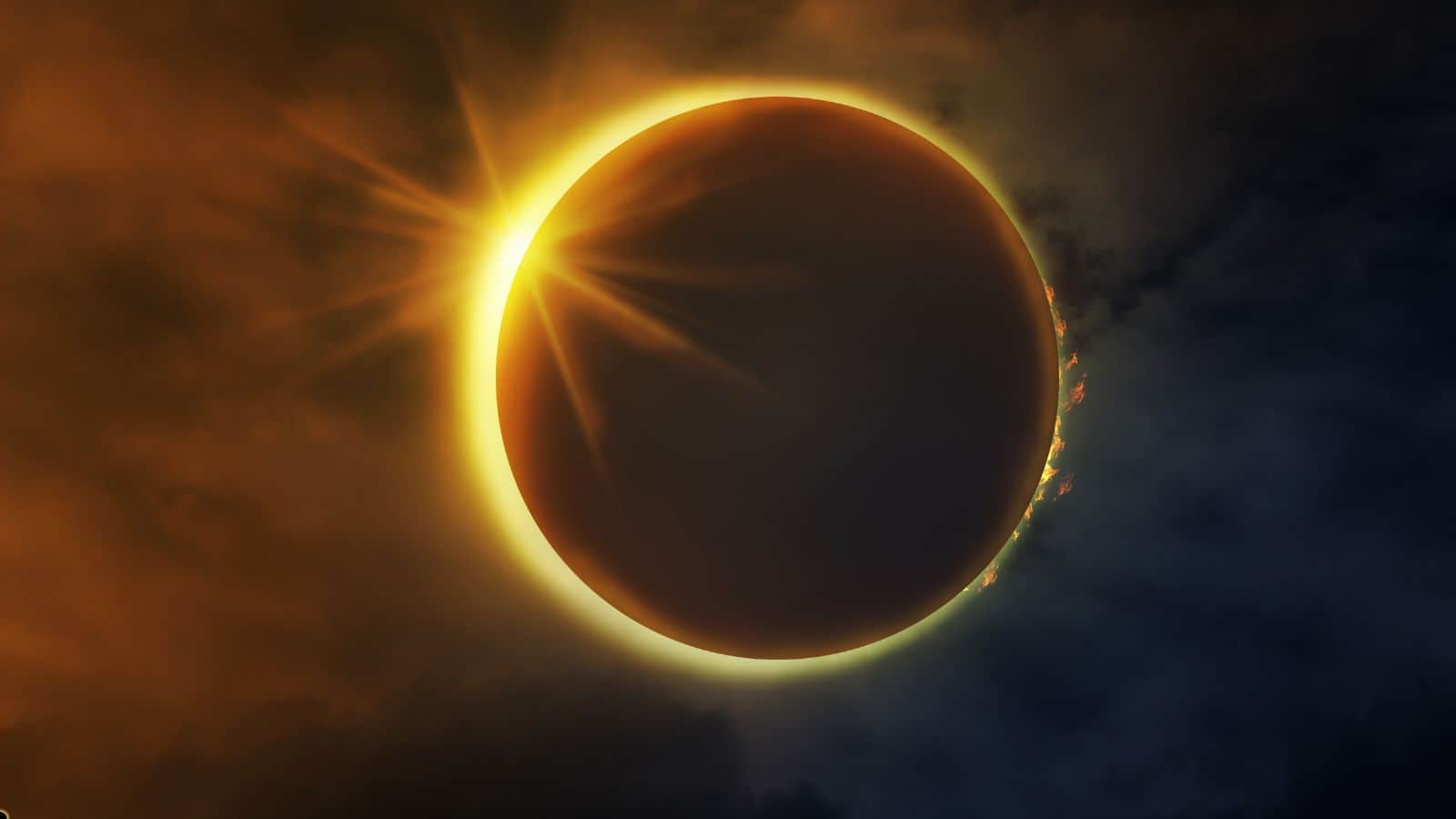Surya Grahan 2025: Dates, Significance, and Viewing Tips
A solar eclipse, also known as Surya Grahan, is an astronomical phenomenon that occurs when the Moon passes directly between the Earth and the Sun, blocking the Sun’s light. The result is either a partial, total, or annular eclipse, depending on the alignment. In 2025, India will experience two significant solar eclipses—one on March 29, 2025, and another on September 21, 2025. These celestial events will be significant not only for their rare occurrence but also due to their cultural and scientific importance.
Table of Contents
ToggleTypes of Solar Eclipses
Before diving into the details of the 2025 eclipses, let’s understand the different types of solar eclipses:
-
Partial Solar Eclipse: A partial solar eclipse happens when the Moon overlaps only a section of the Sun. The Sun appears as if a “bite” has been taken out of it.
-
Total Solar Eclipse: Happens when the Moon completely covers the Sun. During this time, the day turns into night for a few minutes, and the Sun’s corona (outer atmosphere) becomes visible.
-
Annular Solar Eclipse: Occurs when the Moon is farther from the Earth, making it appear smaller than the Sun. As a result, the Sun forms a “Ring of Fire” around the Moon, creating a unique visual phenomenon.
Solar Eclipses in India – 2025
1. March 29, 2025 – Partial Solar Eclipse
The first solar eclipse in India for 2025 will occur on March 29. This will be a partial solar eclipse, where the Moon will obscure only a fraction of the Sun’s surface.While it will be visible across a significant part of India, the maximum coverage will depend on your location.
-
Time of Occurrence: The eclipse will start in the morning hours, with the maximum coverage expected around midday. The exact timings will vary depending on the region, but for many areas, it will be a noticeable event, even though it won’t completely obscure the Sun.
-
Visibility: This eclipse will be visible in many parts of India, including major cities like Delhi, Mumbai, Kolkata, and Chennai, although the extent of the eclipse will vary.
-
Cultural Significance: In Indian tradition, solar eclipses are seen as auspicious and are often accompanied by spiritual practices. Many people choose to observe fasting, perform rituals, and chant sacred mantras during the eclipse.
2. September 21, 2025 – Annular Solar Eclipse
The second solar eclipse in India will occur on September 21, 2025, and this will be a significant annular solar eclipse. Unlike the partial eclipse of March, this event will be more visually striking, as the Moon will appear smaller than the Sun, creating a phenomenon known as the Ring of Fire.
-
Time of Occurrence: This eclipse will occur during the daytime, and depending on the location in India, the “Ring of Fire” could be visible for a few minutes. The exact timing will vary by region, but the spectacle will last longer than the partial eclipse in March.
-
Visibility: The annular eclipse will be visible in many regions of India, especially in parts of North India. However, like all solar eclipses, the best view will be from locations where the eclipse will be annular (i.e., the full “Ring of Fire” effect is visible). Cities like Varanasi, Patna, and parts of Uttar Pradesh will be prime locations for viewing the eclipse in its full glory.
-
Cultural Significance: The Ring of Fire holds deep symbolism in various cultures, and in India, it will undoubtedly be seen as a time for prayer, reflection, and spiritual renewal. Many people observe ritualistic fasting, bathing in holy rivers, or offering prayers during solar eclipses, considering them auspicious moments to purify oneself.
Why is the 2025 Solar Eclipse Special?
The 2025 solar eclipses are particularly significant for a few reasons:
-
Rarity of Annular Eclipses: Annular solar eclipses are less frequent compared to partial or total eclipses, making the September 21 eclipse a rare event. The visual spectacle of the Ring of Fire is something that stargazers and sky enthusiasts eagerly await.
-
Scientific Interest: Solar eclipses offer a unique opportunity for astronomers and scientists to study the Sun’s outer atmosphere, called the corona, which is usually hidden by the bright light of the Sun itself. During a total or annular eclipse, the Sun’s corona becomes visible, allowing for the study of solar flares and other solar phenomena.
-
Cultural Celebrations: In India, eclipses have been seen as significant spiritual events for centuries. The 2025 eclipses will likely lead to various cultural activities, from temple rituals to community gatherings, enhancing the sense of connection with both the cosmos and local traditions.
Viewing the Solar Eclipses Safely
While solar eclipses are fascinating to observe, it’s important to prioritize safety. Looking directly at the Sun without proper protection can lead to serious eye damage. To view the eclipse safely, use eclipse glasses or a pinhole projector. Never look directly at the Sun with your bare eyes, even during a partial eclipse.
Conclusion
The solar eclipses of 2025 promise to be spectacular events that will captivate both astronomers and the general public in India. Whether you’re witnessing the partial eclipse on March 29 or the breathtaking Ring of Fire on September 21, these celestial events will offer a rare chance to connect with the wonders of the universe. Beyond the scientific and cultural excitement, they remind us of the awe-inspiring beauty and precision of the natural world.
Be sure to mark your calendars for these celestial events, and remember to view them safely!
What Role Do English, Mandarin, Malay, and Tamil Play in Singapore? | Maya



